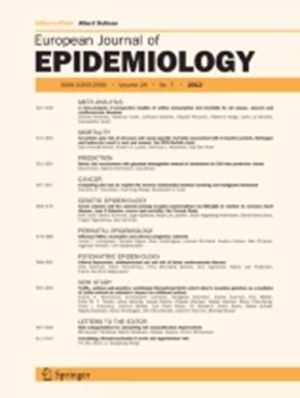Ultra-processed food intake and risk of type 2 diabetes: a pooled analysis of three prospective cohorts of Korean adults and an updated meta-analysis.
IF 5.9
1区 医学
Q1 PUBLIC, ENVIRONMENTAL & OCCUPATIONAL HEALTH
引用次数: 0
Abstract
Studies suggest a positive association between ultra-processed food (UPF) intake and type 2 diabetes risk. However, studies were primarily conducted in Western populations with diets and disease profiles different from populations living elsewhere. In addition, the dose-response relationship needs to be further elucidated. We conducted an individual-level pooled analysis of three Korean prospective cohorts (n = 72,776). UPF intake (in the percentage of g/d as the main UPF unit) was assessed using validated food frequency questionnaires and categorized according to Nova classification. Cox proportional hazards models were used to estimate hazard ratios (HRs) and 95% confidence intervals (CIs). We subsequently conducted a meta-analysis of prospective studies, including recent studies from both Western and non-Western populations, to assess the dose-response relationship. In a pooled analysis of Korean cohorts (up to 18 years of follow-up), the highest (vs. lowest) quartile of UPF intake was associated with an increased type 2 diabetes risk (pooled HR [95% CI] = 1.11 [1.02, 1.21] , p-trend = 0.03). The positive association persisted after additional adjustment for BMI, nutritional factors (fiber, sodium, and carbohydrate intakes), or diet quality score. Among individual UPF subgroups, processed meats, ready-to-eat/heat mixed dishes, and ice cream were positively associated with diabetes risk. In a meta-analysis of 17 prospective cohorts, every 10% (of g/d) increment in UPF intake was associated with a 10% (summary RR [95% CI] = 1.10 [1.08, 1.12] ) higher risk in a dose-response fashion. Our meta-evidence supports that higher UPF intake may monotonically increase type 2 diabetes risk.超加工食品摄入与2型糖尿病风险:一项对韩国成年人三个前瞻性队列的汇总分析和一项更新的荟萃分析
研究表明,超加工食品(UPF)摄入量与2型糖尿病风险呈正相关。然而,这些研究主要是在西方人群中进行的,他们的饮食和疾病概况与生活在其他地方的人群不同。此外,剂量-反应关系有待进一步阐明。我们对三个韩国前瞻性队列(n = 72,776)进行了个体水平的汇总分析。UPF摄入量(以g/d为主要UPF单位的百分比)使用经过验证的食物频率问卷进行评估,并根据Nova分类进行分类。Cox比例风险模型用于估计风险比(hr)和95%置信区间(ci)。随后,我们对前瞻性研究进行了荟萃分析,包括最近来自西方和非西方人群的研究,以评估剂量-反应关系。在韩国队列(长达18年的随访)的汇总分析中,UPF摄入量最高(相对于最低)的四分位数与2型糖尿病风险增加相关(汇总HR [95% CI] = 1.11 [1.02, 1.21], p-trend = 0.03)。在对BMI、营养因素(纤维、钠和碳水化合物摄入量)或饮食质量评分进行额外调整后,这种正相关仍然存在。在UPF的各个亚组中,加工肉类、即食/热拌菜和冰淇淋与糖尿病风险呈正相关。在17个前瞻性队列的荟萃分析中,UPF摄入量每增加10% (g/d),剂量-反应方式的风险就会增加10%(总RR [95% CI] = 1.10[1.08, 1.12])。我们的meta证据支持较高的UPF摄入量可能单调地增加2型糖尿病的风险。
本文章由计算机程序翻译,如有差异,请以英文原文为准。
求助全文
约1分钟内获得全文
求助全文
来源期刊

European Journal of Epidemiology
医学-公共卫生、环境卫生与职业卫生
CiteScore
21.40
自引率
1.50%
发文量
109
审稿时长
6-12 weeks
期刊介绍:
The European Journal of Epidemiology, established in 1985, is a peer-reviewed publication that provides a platform for discussions on epidemiology in its broadest sense. It covers various aspects of epidemiologic research and statistical methods. The journal facilitates communication between researchers, educators, and practitioners in epidemiology, including those in clinical and community medicine. Contributions from diverse fields such as public health, preventive medicine, clinical medicine, health economics, and computational biology and data science, in relation to health and disease, are encouraged. While accepting submissions from all over the world, the journal particularly emphasizes European topics relevant to epidemiology. The published articles consist of empirical research findings, developments in methodology, and opinion pieces.
 求助内容:
求助内容: 应助结果提醒方式:
应助结果提醒方式:


